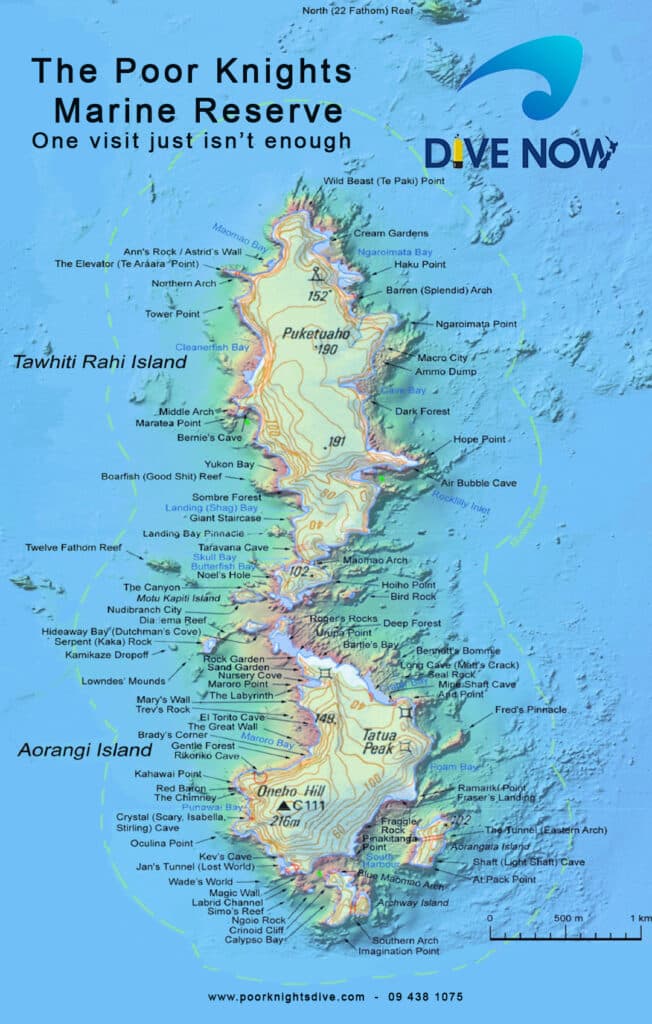The Poor Knights Islands are renowned for their dramatic volcanic topography, featuring numerous sea caves, arches, tunnels, and cliffs.
Whilst some of these are above the water, some are fully submerged.
With dramatic cliffs that any rock climber would dream to climb if they were allowed form a formidable barrier, a few lower lying areas do allow access onto the islands in good weather. This allows the Department of Conservation to periodically check the predator traps.
On the tops of the islands, caves are scattered across the islands. Small burrows give home to the local wildlife.
Anyone visiting the islands to swim, dive or snorkel will be treated with this stunning vista.
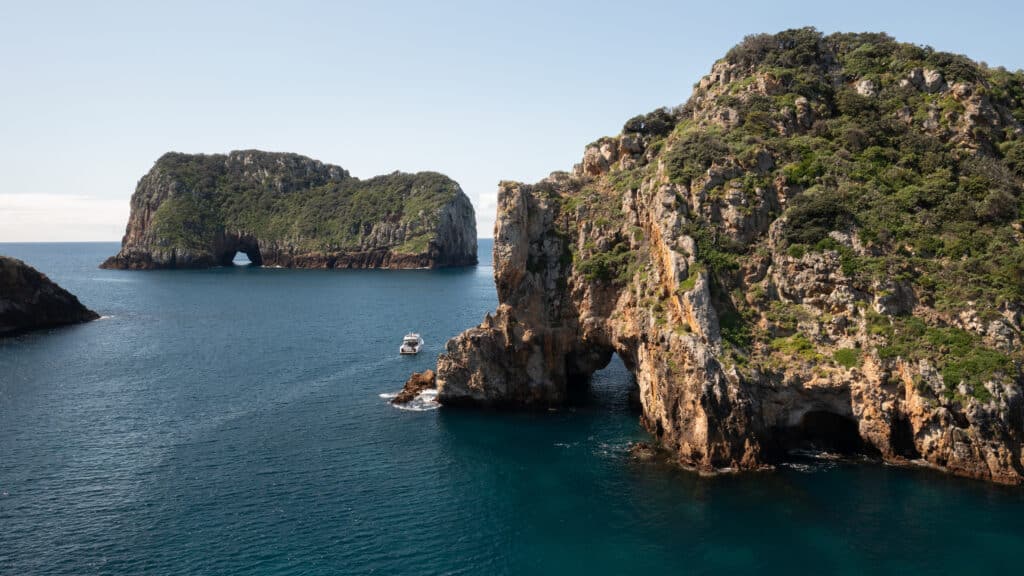
Archways
When the volcano became extinct, it left behind a rugged landscape of basalt and volcanic rock. Over time, the relentless action of the sea, wind, and rain started carving into the rock. Waves pounded at natural weaknesses in the volcanic rock — cracks, faults, and softer rock layers — gradually wearing them away.
Sea caves were the first to form. Eventually, when erosion punched through to the other side of a cave or tunnel, it created an arch.
The constant force of the ocean continues to shape the landscape, so some arches may collapse and new ones might slowly form. The mix of lava flows, ash layers, and hard rock means each arch is unique — some massive and dramatic, others narrow and winding underwater.
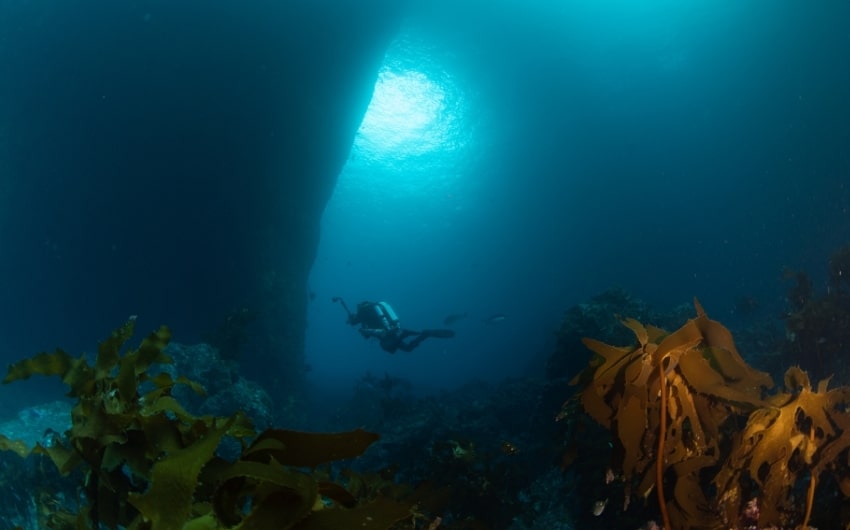
Middle Arch, Eastern Arch and Southern Arch are large enough to drive a boat through and we often will take our customers through them during their surface interval as we change dive site.
Northern Arch, has to be the best of the arches if you want to see large shoals of fish and the chance to see larger pelagic fish.
Mao Mao Arch cuts through Tawhiti Rahi, allowing snorkelers and divers to cross through when the sea conditions allow.
Blue Mao Mao Arch, probably the most famous and popular of the arches is a shallow arch with a window that allows a light beam in at certain points of the day.
Splendid/Barren Arch is on the Eastern side of the island and is less visited. A very shallow entrance over a kelpy reef quickly drops away to a deep and dark passage.
Lost World is a style of archway that opens up inside the islands where divers and snorkelers can look up and see the sky from inside.
Many more shallow unnamed arches scatter the islands.
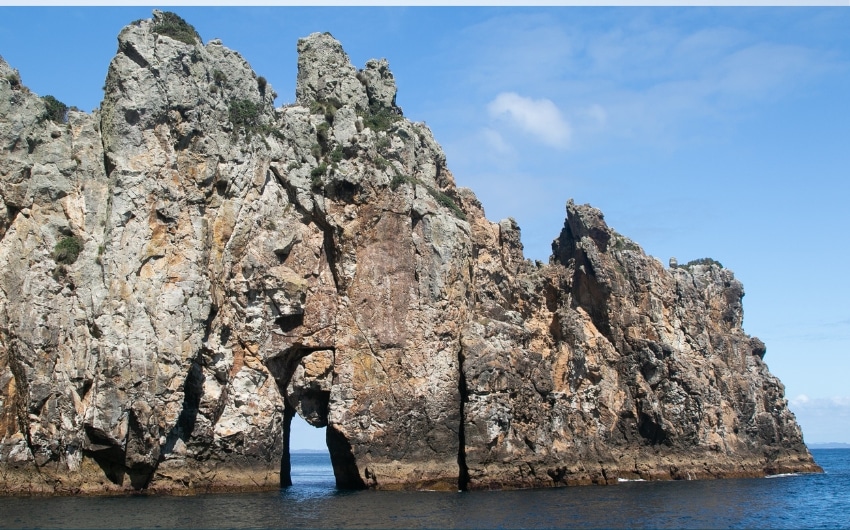
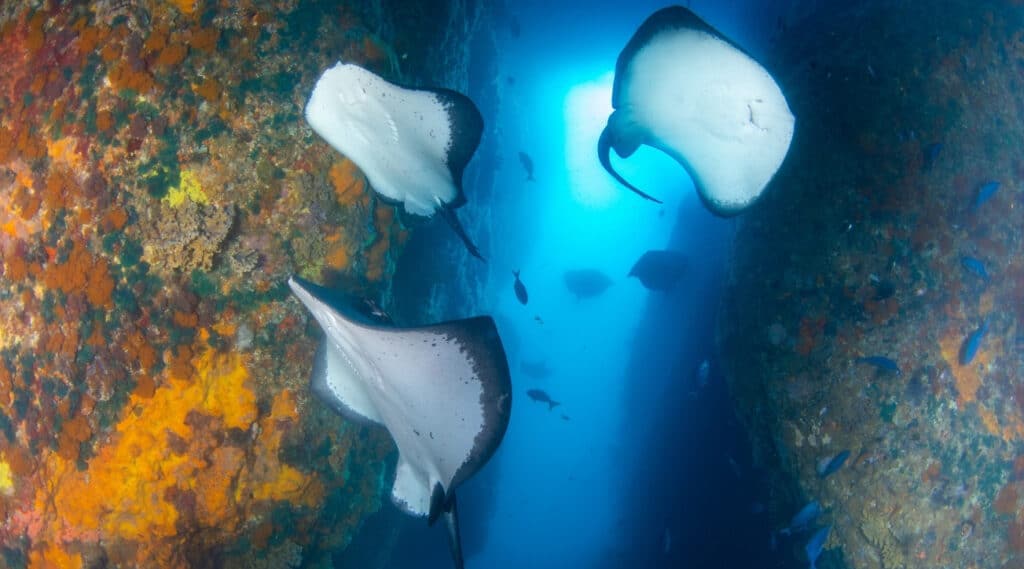
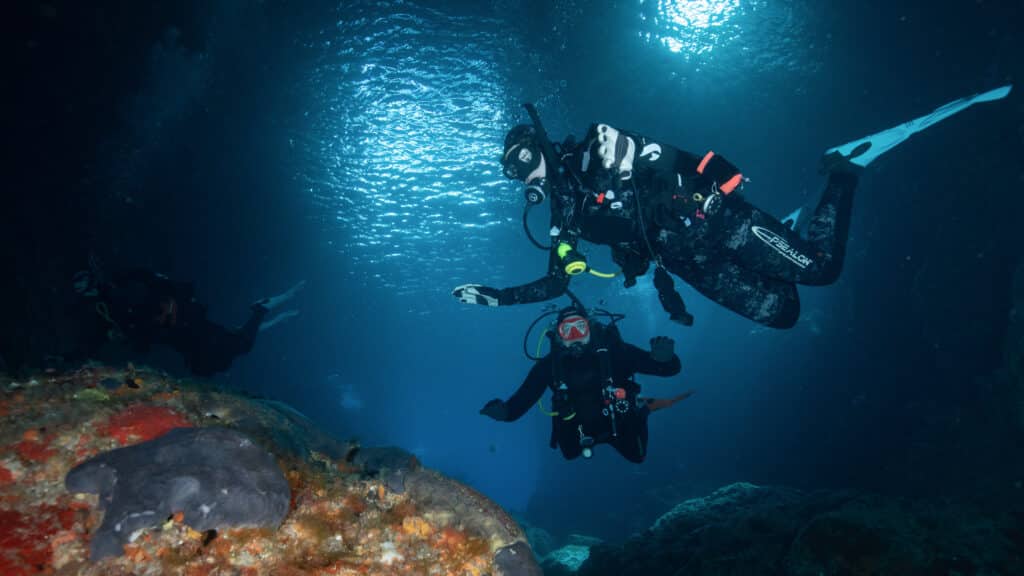
Caves
The most famous cave at the Poor Knights is Rikoriko Cave. It is claimed to be one of the world’s largest sea caves as well as many other interesting facts that keeps visitors entertained.
Measuring at 130 metres long, 80 metres wide and 35 metres at it’s deepest point. The water level varies from 8 metres at the back of the cave to 20 metres + at the entrance. So expect to see a boat or two in their when you visit.
Its shape has given it fantastic acoustics when the sea is calm inside. On those days, the acoustics is said to match that of the Sydney Opera House and the Taj Mahal. Visitors have fun, singing or shouting and listening to the lengthy echo that resonating.
With the size of the cave, the light entering the cave diminishes towards the back and so the sponges and other encrusting underwater life that are found in the cave at 12 metres deep are actually deep water species.
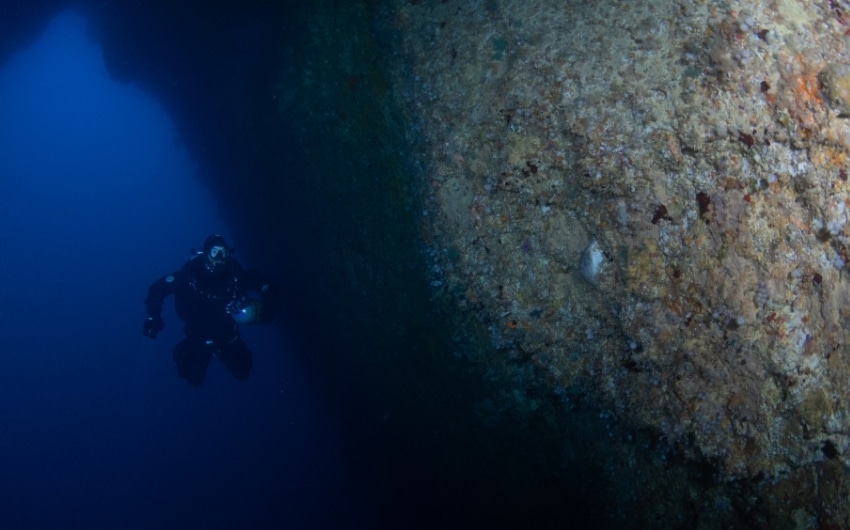
Some of the fun stories you may here on your trip to the cave.
A Japanese submarine spent 2 weeks in the caves carrying out repairs during World War II.
A dead sperm whale drifted into the cave and after a short period of time, it smelled very badly. Department of Conservation decided to tow it away from the cave, but parts of it fell apart as they did this. Part of the lower jaw bone can still be found in the cave, but can be mistaken for a piece of sunken drift wood.
Some much smaller caves are also accessible by snorkelers and divers. These are usually home to shy dark loving fish species such as Blue Moki and Big Eye Fish.
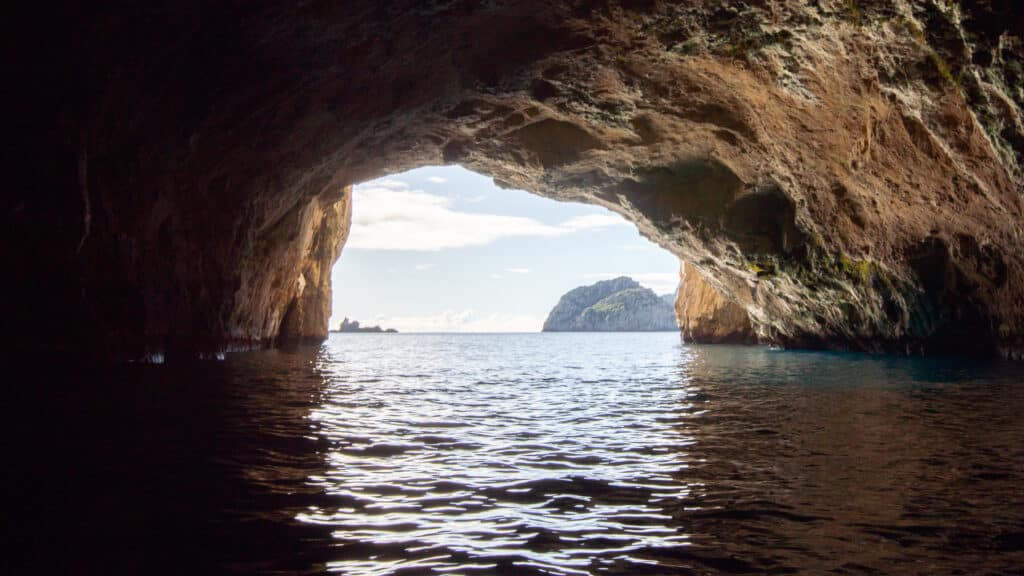
Shark Fin cave in the area commonly known as the Gardens.
Some caves are fully submerged underwater. Many of them are small and present very little risk to divers who want to explore them as they only go back several metres and have large openings. Bernie’s Cave at Middle Arch is a prime example of this.
Then there are the longer caves with multiple routes within them. These should only ever be explored by qualified cave divers with the correct equipment. Taravana and Isabella Caves both full into this catergory.
Long Cave / Matt’s Crack is an open fracture that leads into the islands.
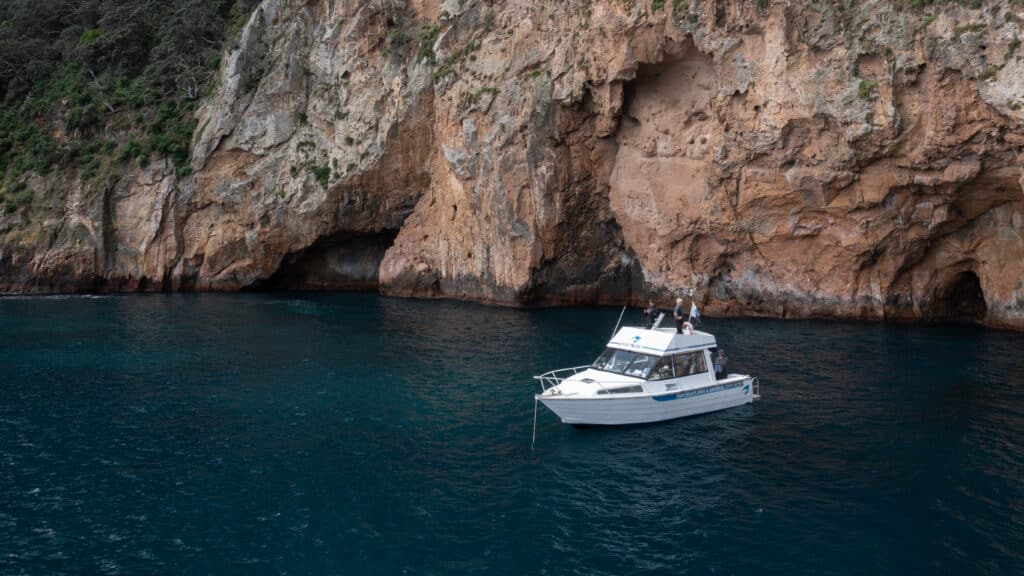
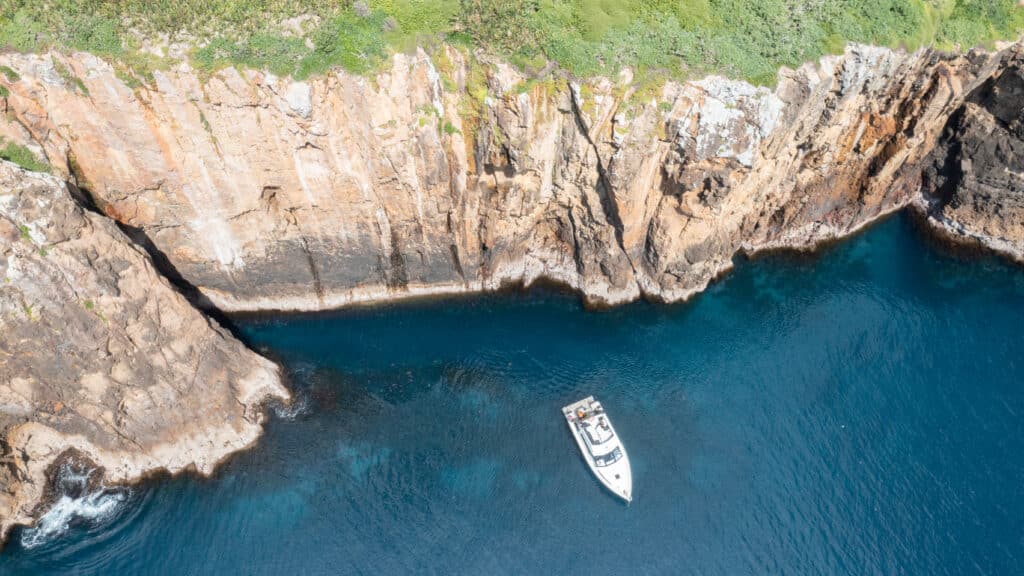
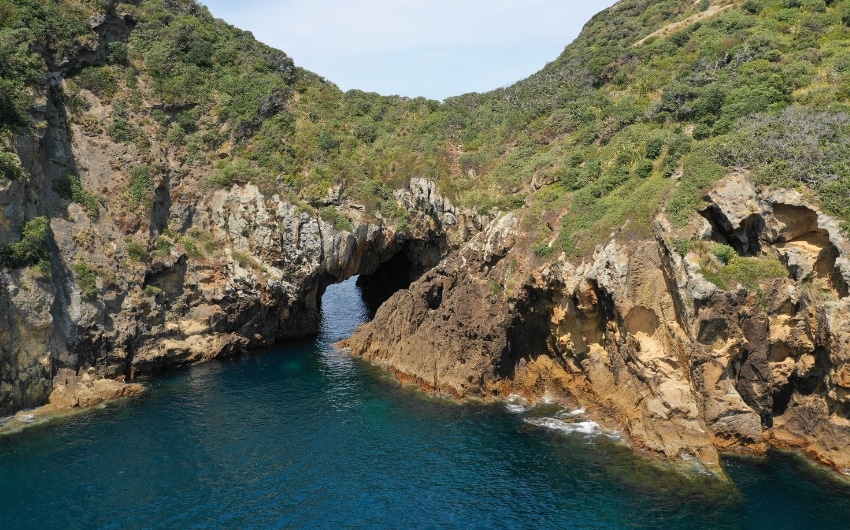
Swim throughs and chimneys
There are many safe short swim throughs that can be explored by divers. Some are easily big enough for divers to swim through and others are a little more tight. Some are more narrow channels with larger rocks covering parts of them. The list of these is lengthy;
Middle Arch has a very short fun one half way through the arch. At the back of the arch by cleaner fish bay, deeper longer ones are present at 19 to 23 metres.
Jan’s Tunnel leading through to the inner island by Wades World.
Red Baron and The Chimney are vertical tunnels that run along the inner wall of the reef at the southern end of Aorangi Island.
Fraggle Rock an exciting and narrow chimney that drops to an exit at 39 metres.
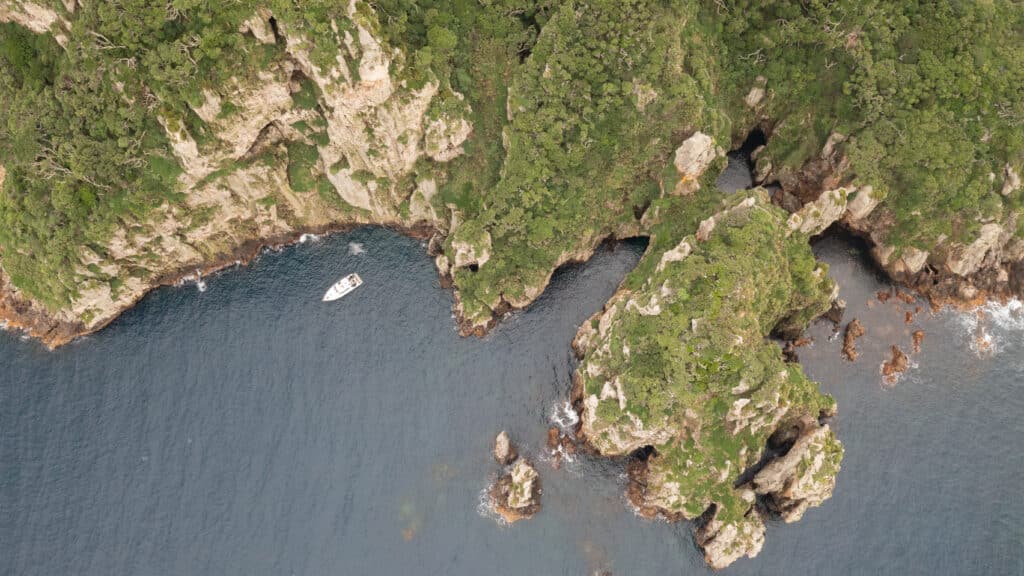
Whether you’re an experienced diver, an eager snorkeler, or simply a lover of the ocean, the Poor Knights Marine Reserve offers an unforgettable adventure. Its stunning underwater landscapes, rich biodiversity, and strict conservation measures make it one of the best diving locations in the world. A trip to the Poor Knights is not just an exploration—it’s a chance to witness the beauty of nature at its most untouched.
Plan your visit, grab your dive gear, and prepare to be amazed by the underwater paradise that is the Poor Knights Marine Reserve. For divers, we would recommend at least 3 days to get a good taster of the islands.
